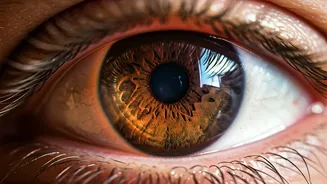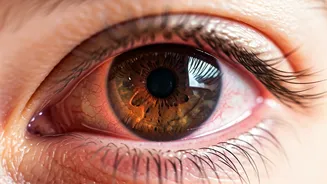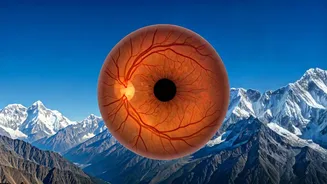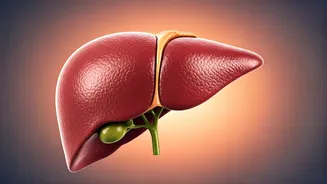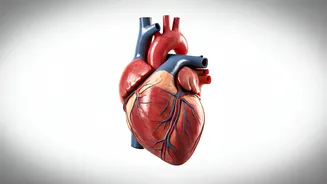Warning Signs Unveiled
Our eyes can function as a mirror reflecting the health of our bodies. Several visual indicators can signal underlying health concerns. This article focuses
on nine such signs that often appear in the eyes. These signs, while not always indicative of serious conditions, should prompt awareness and potentially further investigation. The eyes, when examined closely, can provide clues related to diet, sleep, and even chronic diseases. Recognizing these subtle changes is the first step toward better health management and early detection of potential problems.
Blurred Vision Explained
Blurred vision, a common complaint, can be linked to various health problems. It may indicate conditions like refractive errors, where the eye does not bend light correctly, but also, more seriously, it may be linked to diabetes, high blood pressure, or even neurological issues. When blurred vision is present, it's essential to visit an eye care professional for an accurate diagnosis. Lifestyle changes, such as improving diet, reducing screen time, and taking breaks, can often assist in managing and possibly alleviating the symptoms. Remember that consistent monitoring of eye health is key to maintaining clear vision and overall well-being.
Eye Twitching Insights
Eye twitching, often perceived as a minor nuisance, can sometimes indicate deeper health concerns. It can be related to factors like stress, fatigue, and excessive caffeine intake, which can lead to involuntary muscle contractions around the eye. However, more persistent or severe twitching might signal nutritional deficiencies, particularly in magnesium. Dehydration can also cause this. To address eye twitching, one should prioritize getting enough rest, managing stress levels, and ensuring proper hydration. A balanced diet filled with magnesium-rich foods can often bring relief. Should the twitching persist or worsen, consulting a healthcare professional is advisable to rule out any underlying medical conditions.
Puffy Eye Causes
Puffy eyes are often a temporary consequence of factors such as lack of sleep, allergies, or excessive salt intake. The accumulation of fluids in the tissues around the eyes leads to swelling, giving the appearance of puffiness. However, chronic puffy eyes might be linked to more complex conditions, including thyroid issues or kidney problems. Simple remedies like applying a cold compress, getting adequate rest, and reducing salt consumption can help reduce puffiness. If the issue is persistent, medical consultation becomes essential to evaluate for underlying causes and to receive appropriate treatment. Dietary adjustments and lifestyle changes can often play a crucial role in managing this condition.
Watery Eyes Unpacked
Watery eyes can arise from a range of triggers, from environmental irritants such as smoke and dust to allergies and infections. This is the body's natural response to protect the eyes and flush out irritants. However, excessive tearing can also suggest conditions like dry eye syndrome. For occasional watery eyes, avoiding irritants and using artificial tears might offer relief. If the issue persists or is accompanied by other symptoms like redness or pain, medical evaluation is vital to determine the root cause, as conditions like blocked tear ducts or other more serious issues may be involved. Addressing the underlying cause is key for effective treatment.
Dark Circles Unveiled
Dark circles under the eyes, a common cosmetic concern, can often be linked to fatigue, lack of sleep, or genetics. Thinning skin, which is a natural part of the aging process, also tends to make blood vessels more visible. However, dark circles may also suggest underlying health issues, such as allergies or iron deficiency. Addressing dark circles can involve strategies like getting enough sleep, using over-the-counter creams, and making sure to stay hydrated. A balanced diet and lifestyle modifications can also help, but if the issue is persistent or accompanied by other symptoms, seeking medical advice is always a good idea to rule out any underlying health problems.
Yellow Eyes Decoded
Yellow eyes, also known as jaundice, are a clear sign of a potential liver problem. This condition is caused by the buildup of bilirubin, a yellow pigment produced by the liver, in the bloodstream. Jaundice can signal several conditions, including hepatitis, gallstones, or other liver-related diseases. If yellowing of the eyes is noticed, immediate medical attention is necessary. Prompt treatment of the underlying condition is crucial to prevent serious complications. Regular medical check-ups and a balanced lifestyle are essential for liver health and the early detection of any emerging health issues.
Pale Inner Eyelids
Pale inner eyelids may be a sign of anemia, which is characterized by a deficiency of red blood cells or hemoglobin. This condition often results from iron deficiency, which can be due to poor diet, blood loss, or certain medical conditions. Pale eyelids can be an early indicator, especially when coupled with fatigue, weakness, and other symptoms. Addressing this issue requires identifying and treating the root cause of the anemia. This might include dietary changes, iron supplementation, or medical interventions. Regular monitoring of iron levels and overall health is crucial for managing anemia and ensuring general well-being.
Bulging Eyes Explained
Bulging eyes, a condition also known as proptosis, can be a symptom of hyperthyroidism, a condition where the thyroid gland produces excess hormones. This can cause the tissues around the eyes to swell, pushing the eyes forward. Certain tumors and infections can also lead to this condition. If bulging eyes are noticed, it is important to visit a doctor promptly to determine the cause. Treatment typically involves managing the underlying condition, which may include medication, radiation therapy, or, in some cases, surgery. Early diagnosis and treatment are critical to prevent complications and preserve eye health.
